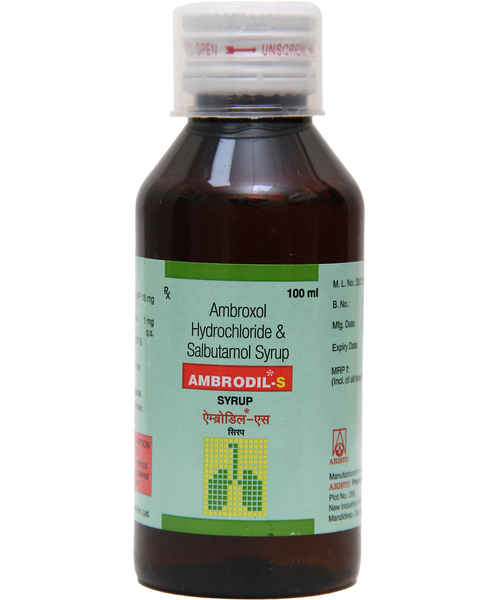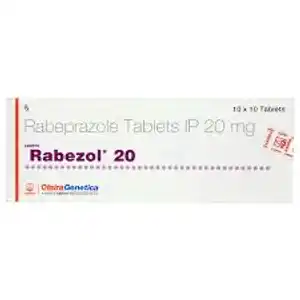q Press QUINAPRIL + HYDROCHLOROTHIAZIDE
Introduction to q Press
q Press is a widely used medication designed to manage high blood pressure and heart-related conditions. It combines two active ingredients, Quinapril and Hydrochlorothiazide, to provide a comprehensive approach to cardiovascular health. By reducing blood pressure, q Press helps to decrease the risk of strokes, heart attacks, and kidney problems. This medication is typically available in tablet form, making it convenient for daily use. With its proven efficacy and safety profile, q Press is a trusted choice for patients seeking effective blood pressure management.
Composition of q Press
The effectiveness of q Press lies in its two active ingredients:
- Quinapril (10mg): Quinapril is an ACE inhibitor that works by relaxing blood vessels, allowing blood to flow more easily. This helps to lower blood pressure and reduce the strain on the heart.
- Hydrochlorothiazide (12.5mg): Hydrochlorothiazide is a diuretic, commonly known as a "water pill." It helps the body get rid of excess salt and water through urine, which also contributes to lowering blood pressure.
Uses for q Press
q Press is primarily used for:
- Managing high blood pressure (hypertension).
- Reducing the risk of stroke and heart attack.
- Improving heart function in patients with heart failure.
Side Effects of q Press
While q Press is generally well-tolerated, some patients may experience side effects, including:
- Dizziness or lightheadedness.
- Headache.
- Fatigue.
- Nausea or vomiting.
- Dry cough.
- Increased urination.
Precautions of q Press
Before taking q Press, consider the following precautions:
- Inform your healthcare provider about any allergies or medical conditions you have.
- Discuss any other medications or supplements you are taking to avoid potential interactions.
- q Press may not be suitable for pregnant or breastfeeding women; consult your doctor.
- Avoid alcohol as it can increase certain side effects like dizziness.
- Stand up slowly from sitting or lying positions to reduce the risk of dizziness.
Conclusion
q Press offers a reliable and effective solution for managing high blood pressure and related cardiovascular conditions. Its unique combination of Quinapril and Hydrochlorothiazide works synergistically to provide comprehensive heart health benefits. As with any medication, it's essential to follow your healthcare provider's instructions and take necessary precautions to ensure optimal results. With its proven track record, q Press remains a valuable option for those seeking to improve their cardiovascular health.

Are the medicines in combination of Hydrochlorothiazide and Quinapril safe to take together?
Hydrochlorothiazide and Quinapril, when used together, can interact with drugs that affect potassium levels, such as potassium-sparing diuretics or supplements, leading to hyperkalemia. They can also interact with NSAIDs, which may reduce their antihypertensive effects. Monitoring involves regular blood tests to check electrolyte levels, kidney function, and blood pressure. Patients should be advised to report any unusual symptoms, such as muscle weakness or irregular heartbeat, which could indicate an interaction. Regular follow-ups with a healthcare provider are essential to adjust dosages and manage any interactions effectively.

Are there harms and risks from taking combination of Hydrochlorothiazide and Quinapril?
Common side effects of Hydrochlorothiazide include frequent urination, dizziness, and electrolyte imbalances such as low potassium levels. Quinapril may cause dizziness, cough, and fatigue. Both medications can lead to more serious side effects like severe allergic reactions, including angioedema, which involves swelling of the face, lips, or throat. Other significant adverse effects include kidney dysfunction and changes in blood pressure. Patients should be monitored for signs of dehydration and electrolyte disturbances, and any severe or persistent side effects should be reported to a healthcare provider immediately.

Can I take combination of Hydrochlorothiazide and Quinapril if I am pregnant?
Hydrochlorothiazide and Quinapril are generally not recommended during pregnancy. Quinapril, an ACE inhibitor, is particularly contraindicated as it can cause injury and even death to the developing fetus, especially during the second and third trimesters. Hydrochlorothiazide may also pose risks, such as affecting fetal electrolyte balance. If a patient becomes pregnant while taking these medications, they should contact their healthcare provider immediately to discuss alternative treatments. The potential risks to the fetus must be weighed against the benefits of controlling maternal blood pressure.

Can I take combination of Hydrochlorothiazide and Quinapril while breastfeeding?
Hydrochlorothiazide and Quinapril are both excreted in human milk, and caution is advised when administering these medications to breastfeeding mothers. Hydrochlorothiazide may reduce milk production, especially at higher doses, and could potentially affect the nursing infant. Quinapril's effects on a breastfeeding infant are not well-studied, but due to the potential for serious adverse reactions, a decision should be made to either discontinue the medication or stop breastfeeding. Mothers should discuss the risks and benefits with their healthcare provider to make an informed decision.

Can I take combination of Hydrochlorothiazide and Quinapril with other prescription drugs?
Hydrochlorothiazide and Quinapril can interact with several prescription medications. Nonsteroidal anti-inflammatory drugs (NSAIDs) like ibuprofen can reduce the effectiveness of both medications. Quinapril should not be taken with other ACE inhibitors or angiotensin receptor blockers due to the risk of increased side effects. Hydrochlorothiazide can interact with lithium, increasing the risk of lithium toxicity. Both medications can interact with other blood pressure medications, potentially leading to excessive lowering of blood pressure. Patients should inform their healthcare provider of all medications they are taking to avoid harmful interactions.

For how long is combination of Hydrochlorothiazide and Quinapril taken?
Hydrochlorothiazide and Quinapril are typically used as long-term treatments for managing high blood pressure and heart failure. While Hydrochlorothiazide can be used on a daily basis or on specific days to manage fluid retention, Quinapril is usually taken daily to maintain consistent blood pressure control. Both medications are intended for ongoing use, even if the patient feels well, as they manage symptoms but do not cure the underlying conditions. Regular monitoring by a healthcare provider is essential to ensure effectiveness and adjust dosages as needed.

How does combination of Hydrochlorothiazide and Quinapril work?
Hydrochlorothiazide works by increasing the excretion of sodium and water through the kidneys, which helps reduce fluid retention and lower blood pressure. Quinapril, on the other hand, inhibits the angiotensin-converting enzyme (ACE), which decreases the production of angiotensin II, a substance that narrows blood vessels. This action helps relax and widen blood vessels, improving blood flow and reducing blood pressure. Together, these medications complement each other by addressing different mechanisms that contribute to high blood pressure, providing a more comprehensive treatment approach.

How does one take combination of Hydrochlorothiazide and Quinapril?
Hydrochlorothiazide and Quinapril can be taken with or without food, but it is important to take them at the same time each day to maintain consistent blood levels. Patients are advised to follow any dietary recommendations from their doctor, such as a low-salt or low-sodium diet, and to avoid potassium supplements or salt substitutes containing potassium without consulting their healthcare provider. It's also important to stay hydrated, especially in hot weather or when exercising, to prevent dehydration. Alcohol should be consumed in moderation as it can enhance side effects like dizziness.

How do I know if combination of Hydrochlorothiazide and Quinapril is working?
The benefit of Hydrochlorothiazide and Quinapril is primarily assessed by monitoring blood pressure levels. Regular blood pressure checks help determine the effectiveness of the medication in maintaining target blood pressure ranges. Additionally, for Hydrochlorothiazide, the reduction in fluid retention and associated symptoms like swelling can be observed. For Quinapril, improvements in heart function and reduced symptoms of heart failure are also indicators of its benefit. Both medications may require periodic blood tests to monitor kidney function and electrolyte levels, ensuring safe and effective treatment.

How do I store combination of Hydrochlorothiazide and Quinapril?
Hydrochlorothiazide and Quinapril do not require refrigeration. They should be stored at room temperature, away from excess heat and moisture, and kept in their original container with the lid tightly closed. It's important to keep these medications out of reach of children and pets to prevent accidental ingestion. The tablets should not be stored in the bathroom, as the humidity can affect their stability. Proper storage ensures the medication remains effective throughout its shelf life.

How effective is combination of Hydrochlorothiazide and Quinapril?
The effectiveness of Hydrochlorothiazide and Quinapril in treating high blood pressure is supported by clinical trials and extensive use in medical practice. Hydrochlorothiazide has been shown to effectively reduce fluid retention and lower blood pressure by promoting diuresis. Quinapril has demonstrated efficacy in lowering blood pressure and improving heart function by inhibiting the ACE enzyme, which reduces vasoconstriction. Together, they provide a synergistic effect, enhancing blood pressure control and reducing cardiovascular risks. The combination therapy is particularly beneficial for patients who require multiple mechanisms of action to achieve optimal blood pressure management.

How long does it take for combination of Hydrochlorothiazide and Quinapril to work?
Hydrochlorothiazide, a diuretic, typically begins to work within 2 hours of ingestion, with its effects peaking around 4 hours and lasting up to 12 hours. Quinapril, an ACE inhibitor, starts to lower blood pressure within 1 hour, with peak effects usually occurring between 2 to 4 hours after dosing. When combined, the onset of action for the combination of Hydrochlorothiazide and Quinapril is expected to be within a similar timeframe, providing a synergistic effect in reducing blood pressure. Both medications work together to enhance the antihypertensive effect, with Hydrochlorothiazide reducing fluid retention and Quinapril relaxing blood vessels.

What disease or symptom is combination of Hydrochlorothiazide and Quinapril used for?
Hydrochlorothiazide and Quinapril are primarily indicated for the treatment of high blood pressure (hypertension). Hydrochlorothiazide is also used to treat edema, which is fluid retention associated with conditions like heart failure, kidney disease, and liver disease. Quinapril is additionally used in the management of heart failure. Both medications help reduce the risk of complications such as heart attacks, strokes, and kidney damage by effectively controlling blood pressure and improving heart function.

What is combination of Hydrochlorothiazide and Quinapril?
Hydrochlorothiazide and Quinapril are commonly used together to treat high blood pressure. Hydrochlorothiazide is a diuretic that helps reduce fluid retention by increasing urine output, while Quinapril is an ACE inhibitor that relaxes blood vessels by blocking the formation of a hormone that narrows blood vessels. Together, they effectively lower blood pressure, reducing the risk of heart attacks and strokes. Both medications work synergistically to enhance the overall antihypertensive effect.

What is the usual dose of combination of Hydrochlorothiazide and Quinapril?
The usual adult dose for Hydrochlorothiazide when used alone is typically 12.5 to 50 mg per day, depending on the condition being treated. Quinapril is usually prescribed in doses ranging from 10 to 80 mg per day, often starting at a lower dose and gradually increasing. When combined in a single tablet, the typical doses are 10 mg of Quinapril with 12.5 mg of Hydrochlorothiazide, or 20 mg of Quinapril with 12.5 or 25 mg of Hydrochlorothiazide. The combination is designed to enhance blood pressure control by utilizing the diuretic effect of Hydrochlorothiazide and the vasodilatory effect of Quinapril.

Who should avoid taking combination of Hydrochlorothiazide and Quinapril?
Hydrochlorothiazide and Quinapril have several important warnings and contraindications. Quinapril should not be used during pregnancy due to the risk of fetal harm. Both medications can cause severe allergic reactions, including angioedema. Patients with a history of angioedema related to ACE inhibitors should avoid Quinapril. Hydrochlorothiazide is contraindicated in patients with anuria or hypersensitivity to sulfonamide-derived drugs. Both medications require caution in patients with kidney or liver disease, and regular monitoring of blood pressure, kidney function, and electrolytes is essential to prevent adverse effects.
Available in 2 variations

Q Press H 10 mg/12.5 mg Tablet
strip of 10 tablets

Q Press H 20 mg/12.5 mg Tablet
strip of 10 tablets












.svg)
